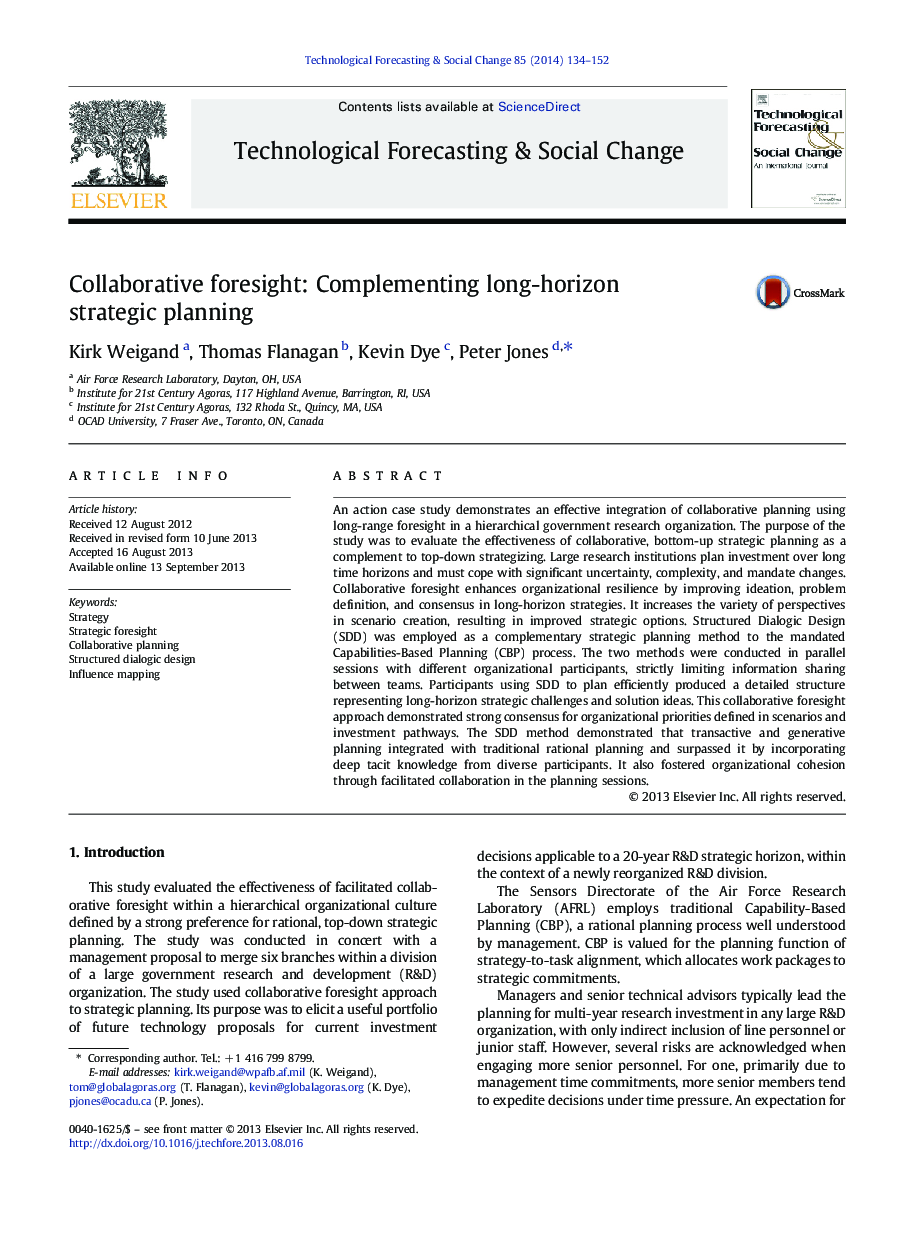| Article ID | Journal | Published Year | Pages | File Type |
|---|---|---|---|---|
| 7257324 | Technological Forecasting and Social Change | 2014 | 19 Pages |
Abstract
An action case study demonstrates an effective integration of collaborative planning using long-range foresight in a hierarchical government research organization. The purpose of the study was to evaluate the effectiveness of collaborative, bottom-up strategic planning as a complement to top-down strategizing. Large research institutions plan investment over long time horizons and must cope with significant uncertainty, complexity, and mandate changes. Collaborative foresight enhances organizational resilience by improving ideation, problem definition, and consensus in long-horizon strategies. It increases the variety of perspectives in scenario creation, resulting in improved strategic options. Structured Dialogic Design (SDD) was employed as a complementary strategic planning method to the mandated Capabilities-Based Planning (CBP) process. The two methods were conducted in parallel sessions with different organizational participants, strictly limiting information sharing between teams. Participants using SDD to plan efficiently produced a detailed structure representing long-horizon strategic challenges and solution ideas. This collaborative foresight approach demonstrated strong consensus for organizational priorities defined in scenarios and investment pathways. The SDD method demonstrated that transactive and generative planning integrated with traditional rational planning and surpassed it by incorporating deep tacit knowledge from diverse participants. It also fostered organizational cohesion through facilitated collaboration in the planning sessions.
Related Topics
Social Sciences and Humanities
Business, Management and Accounting
Business and International Management
Authors
Kirk Weigand, Thomas Flanagan, Kevin Dye, Peter Jones,
